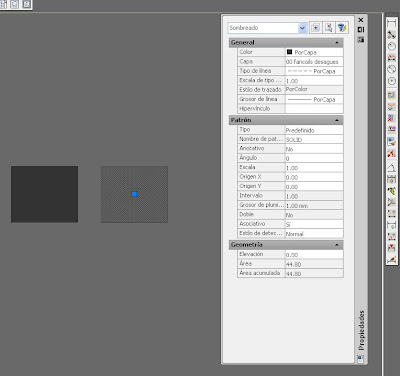Aug 07, 2009 Hola a todos: Tengo un problema con AutoCAD 2010: al ejecutar el comando hatch cuando uso la opcion de seleccionar el punto interior no se marca punteado como en AutoCAD 2009 y anteriores para saber en que area es donde se va a crear el contorno donde se va a aplicar el hatch. Sombreados (Hatchs) para AutoCAD - (Descarga. Aug 15, 2011 - If you need to insert a hatch in an area that isn't completely 'closed' this may be your new favorite friend. Instead of temporarily making a line to.
Generally you can export a drawing with its fonts, texture, materials, references, data links etc using e-transmit but unfortunately, it can’t export custom hatch pattern file (PAT) with the package and you have to add it in the package separately. But if you did not receive a drawing with PAT file then you can export it from drawing as well using the method shown below.
Exporting hatch pattern Let’s assume that you have a drawing with custom hatch applied in it with name ZIGZAG. In order to export that hatch, you need to create its PAT file. I am using a LISP routine in this tutorial to extract PAT file from drawing. Download the LISP routine Extract it from the compressed package and paste it on the desktop.
Also, make sure that your source drawing is copied to the desktop from which you want to extract hatch pattern. Now open the drawing from your desktop and drag and drop lisp routine to the drawing as shown in the image below. Now type GETPAT on the command line and click on ZIGZAG pattern present in drawing. This pattern will be exported as ZIGZAG.PAT on the desktop. For some cases the file is exported to C: Users [user name] Documents so if you are unable to find it on the desktop then look it there. Importing hatch in your AutoCAD Now you have this hatch pattern all you need to do is import it to your AutoCAD software, for this copy ZIGZAG.PAT file and paste it to support folder of the installation directory.
To locate support folder type OP on the command line then press enter, options window will pop up select files tab and expand “support file search path” tree there you will see the location of support file. See image below for reference.
After pasting the file launch your software if it is already open then close it and launch it again. You will now find ZIGZAG hatch pattern among all the patterns, and you can use it just like other hatch patterns. Update Some users are unable to use the original GETPAT.LSP file and they are getting this error Command: GETPAT Select hatch:; error: bad argument value: positive 0 If that’s the case with you too then use this all the steps are exactly the same you just need to close your older session of AutoCAD and start a fresh one to use it. Credits: Thanks, Paul Turvill for providing access to GETPAT.LSP file, You can find more free LISP routines on his website A big thanks to Cooper Francis for providing us access to this modified routine, you can get many free and premium Autodesk tools on his website. Igo primo 20 full. I am a mechanical engineer and I have worked with Design, Manufacturing and Training industries but now SourceCAD is my full-time work and I use it to train students all over the world.
I also train corporate clients and help them develop the skill set of their workforce. I am Autodesk AutoCAD Certified Professional and an Autodesk expert elite member. I am a regular contributor of AUGI World magazine and apart from SourceCAD I also develop AutoCAD video courses for Pluralsight and other E-Learning businesses. Mirabyte frontface lockdown. Hello I got a recommendation for a Lisp named getpat.lsp to export AutoCAD’s hatch as a.pat.


I have a several colleagues asking me, why they can’t snap to hatch object, just like when they use their old AutoCAD. Actually, you still can. It seems that Autodesk has disabled this feature by default, may be because performance issue. To activate it, simply open option. You can do it by typing OP then [enter] or by accessing through. In option dialog box, drafting tab, in object snap options, turn off ignore hatch objects.
You can also set this option by changing OSOPTIONS system variable. I snip this from help file: 0: Object snaps operate on hatch objects, and on geometry with negative Z values when using a dynamic UCS 1: Object snaps ignore hatch objects 2: Object snaps ignore geometry with negative Z values during use of a dynamic UCS See! About Edwin Prakoso.
Posts
- List Naruto Shippuden Download Naruto Shippuden Mkv 3gp Mp4 Sub Indo
- Vector Undangan Pernikahan Cdr Viewer
- Pluraleyes Keygen Crack Serial Number
- Uzorova Schyot V Predelah 20
- Johnny Castaway Screensaver For Windows 10
- Chevron Digital Timer Socket Manual Download Free Software
- Kichik Suralar Kuroni Karimdan
- Programma Dlya Prosmotra Demok V Cs Go